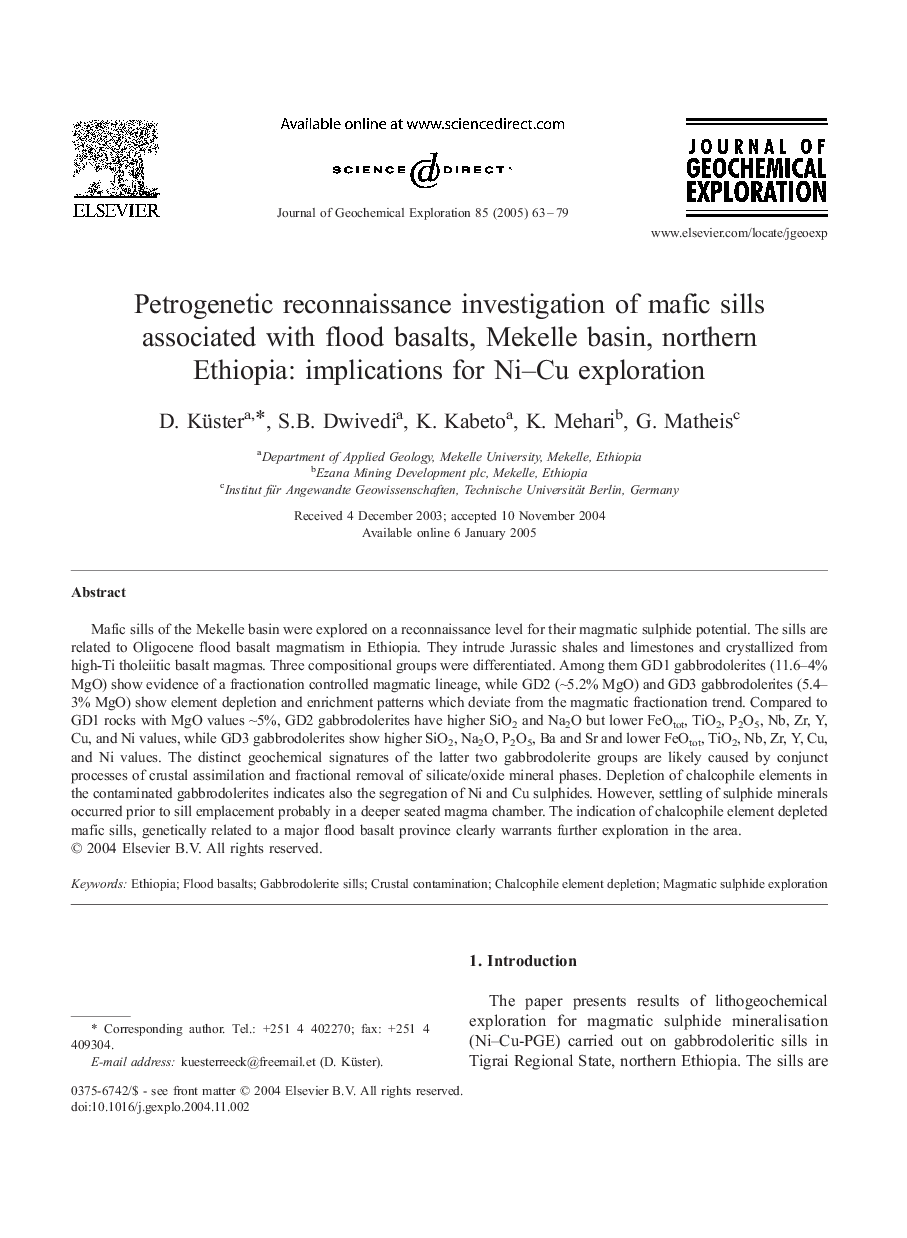| Article ID | Journal | Published Year | Pages | File Type |
|---|---|---|---|---|
| 9461130 | Journal of Geochemical Exploration | 2005 | 17 Pages |
Abstract
Mafic sills of the Mekelle basin were explored on a reconnaissance level for their magmatic sulphide potential. The sills are related to Oligocene flood basalt magmatism in Ethiopia. They intrude Jurassic shales and limestones and crystallized from high-Ti tholeiitic basalt magmas. Three compositional groups were differentiated. Among them GD1 gabbrodolerites (11.6-4% MgO) show evidence of a fractionation controlled magmatic lineage, while GD2 (â¼5.2% MgO) and GD3 gabbrodolerites (5.4-3% MgO) show element depletion and enrichment patterns which deviate from the magmatic fractionation trend. Compared to GD1 rocks with MgO values â¼5%, GD2 gabbrodolerites have higher SiO2 and Na2O but lower FeOtot, TiO2, P2O5, Nb, Zr, Y, Cu, and Ni values, while GD3 gabbrodolerites show higher SiO2, Na2O, P2O5, Ba and Sr and lower FeOtot, TiO2, Nb, Zr, Y, Cu, and Ni values. The distinct geochemical signatures of the latter two gabbrodolerite groups are likely caused by conjunct processes of crustal assimilation and fractional removal of silicate/oxide mineral phases. Depletion of chalcophile elements in the contaminated gabbrodolerites indicates also the segregation of Ni and Cu sulphides. However, settling of sulphide minerals occurred prior to sill emplacement probably in a deeper seated magma chamber. The indication of chalcophile element depleted mafic sills, genetically related to a major flood basalt province clearly warrants further exploration in the area.
Related Topics
Physical Sciences and Engineering
Earth and Planetary Sciences
Economic Geology
Authors
D. Küster, S.B. Dwivedi, K. Kabeto, K. Mehari, G. Matheis,
